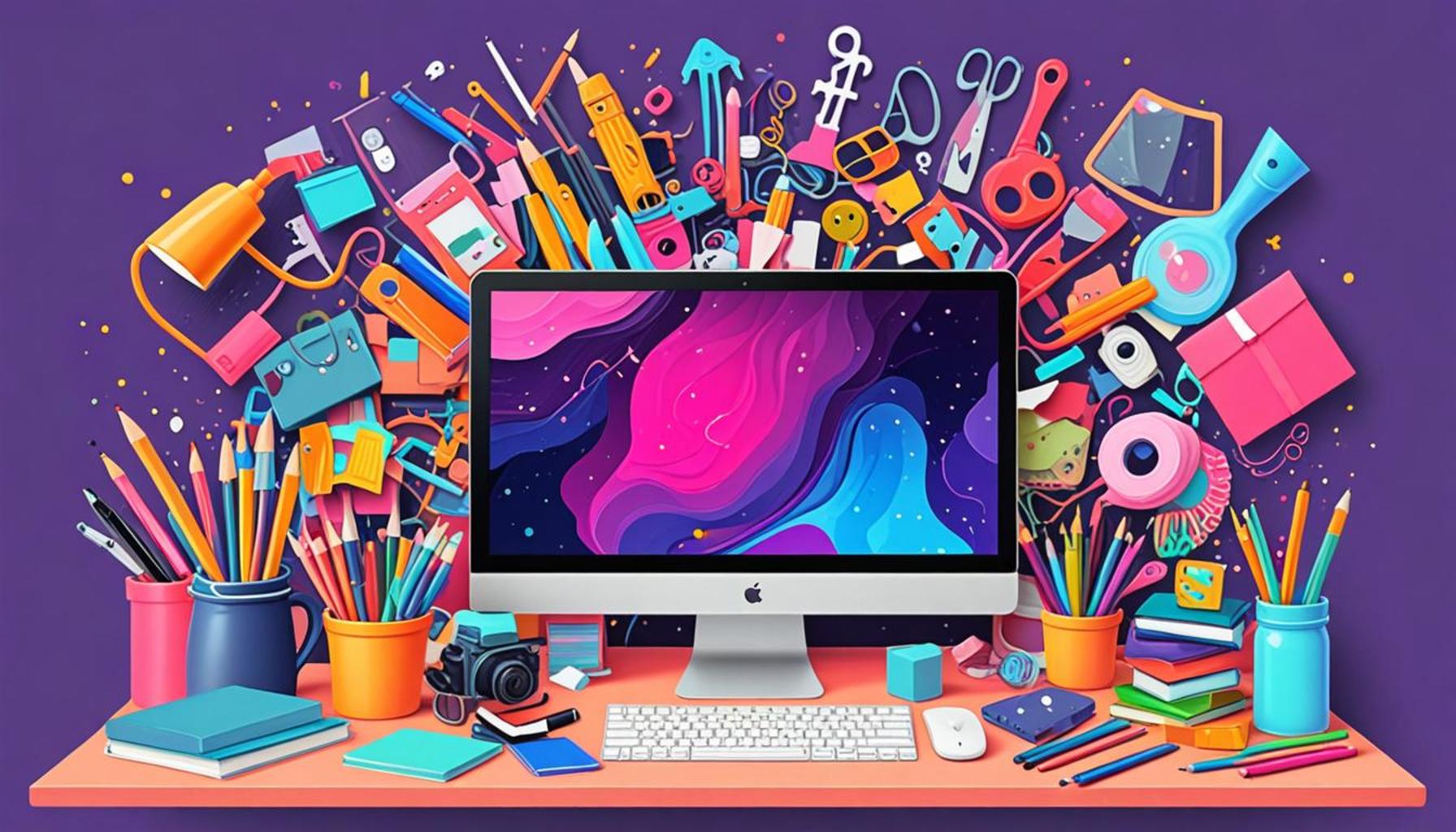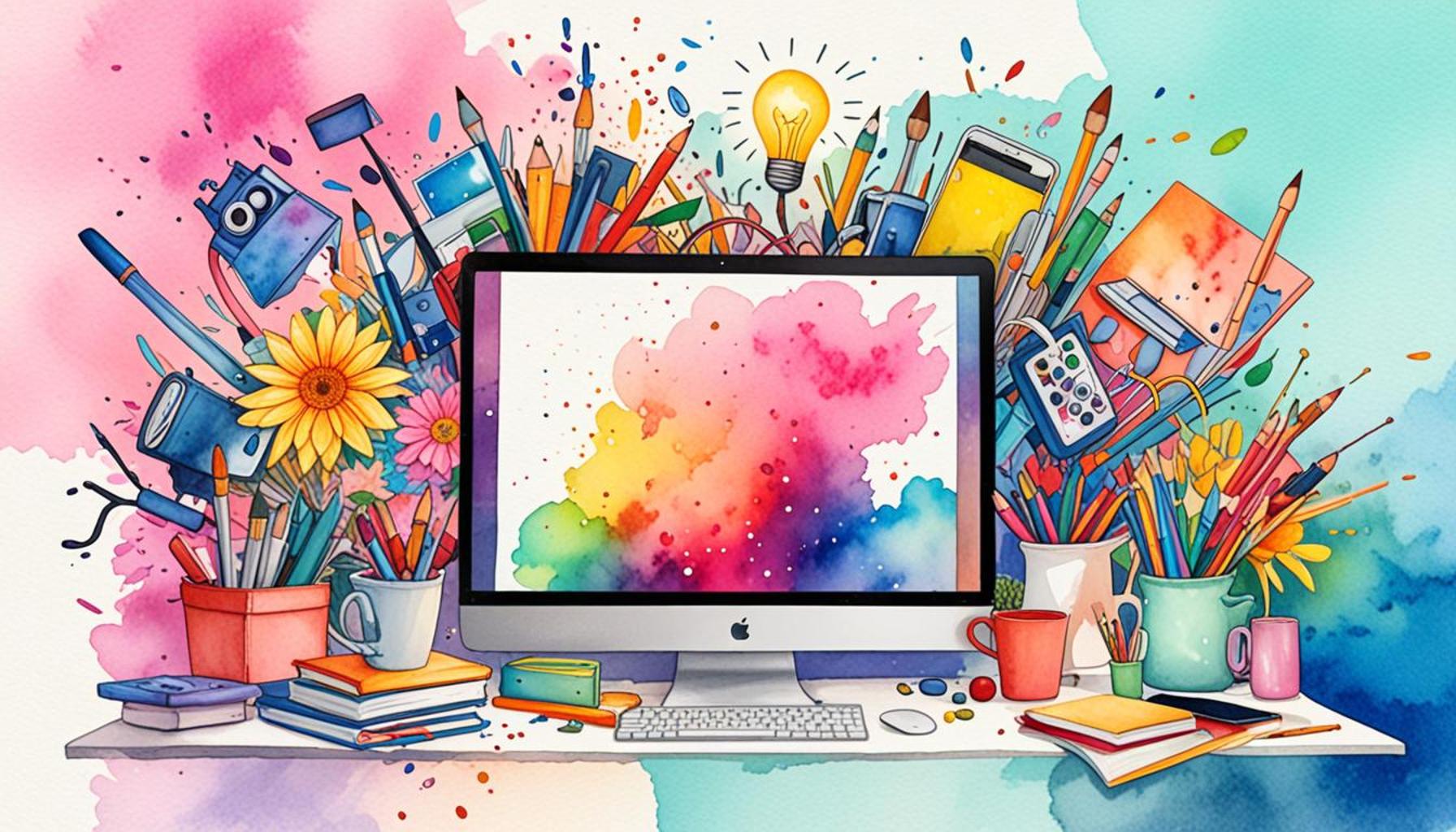The Art of Digital Decluttering: How to Organize Your Virtual Space to Increase Productivity

Understanding Digital Decluttering
In today’s hyper-connected world, where the flow of information is relentless, the need for effective management of our virtual spaces cannot be overstated. Our digital environments are often a reflection of our physical ones, teeming with distractions that can dilute our focus and drain our productivity. Learning to navigate this digital landscape through diligent decluttering is not only beneficial but essential for fostering creativity and efficiency.
Email Overload
One of the most common pitfalls in our digital lives is email overload. An inbox overflowing with unread emails can leave you feeling overwhelmed and stressed. Research indicates that the average office worker receives upwards of 121 emails each day, and managing these can become a task in itself. Implementing a strategy like the Inbox Zero approach can be transformative. This method encourages users to strive for empty inboxes by archiving, deleting, or responding to emails promptly, thereby minimizing distractions and keeping your focus intact.
File Chaos
Similarly, file chaos can hinder efficiency. Without a structured system for documents and files, locating important information can turn into a frustrating scavenger hunt. For instance, creating a clear folder hierarchy on your computer or utilizing cloud storage solutions like Google Drive or Dropbox can simplify access and improve organization. Designate specific folders for various projects or types of documents, ensuring that you can retrieve what you need without excessive searching. It might even help to implement naming conventions for files that make them easy to find.
Application Clutter
Moreover, the issue of application clutter cannot be ignored. As technology becomes more integrated into our daily lives, we often accumulate numerous applications, many of which we rarely use. A report from Microsoft suggests that unused applications can slow down device performance, directly affecting productivity. Regularly reviewing and uninstalling apps that no longer serve a purpose can free up not just storage space but also mental bandwidth, allowing you to focus on what truly matters.
The Benefits of Digital Decluttering
The positive implications of digital decluttering extend beyond mere organization; they contribute to profound improvements in overall well-being. For one, establishing a streamlined digital workspace can lead to improved focus and concentration. By minimizing distractions, you’re better equipped to dive into work with clarity and intent. Furthermore, the act of decluttering itself can serve as a form of self-care, helping to reduce stress associated with navigating a digital mess.
Ultimately, embracing these practices positions you to experience enhanced productivity. By regaining control over your digital environment, you can effectively streamline workflows, allowing tasks to flow more seamlessly and efficiently. As we delve into practical strategies, you’ll discover simple yet effective ways to reclaim your time and elevate your productivity within the vast digital landscape.
DISCOVER MORE: Click here to learn how simplicity promotes sustainability
Identifying Areas for Digital Decluttering
To effectively embrace the art of digital decluttering, it is crucial to identify the main areas in your virtual space that require attention. Understanding where clutter accumulates can help streamline your approach and drive more significant results. Here are three key areas to focus on:
1. Social Media Accounts
Your social media accounts can often become overwhelming, filled with a constant stream of notifications, messages, and posts that demand your attention. For instance, a typical user on Facebook may find themselves scrolling through countless updates and advertisements, which can lead to decreased productivity and heightened stress levels. To combat this, consider performing a thorough audit of your accounts. Begin by evaluating who you follow and the pages you engage with. Remove or mute users, pages, and groups that do not contribute positively to your feed. This includes unfollowing acquaintances whose posts don’t resonate with your interests and leaving groups that no longer serve your professional or personal objectives.
By curating your social media experience, you can reclaim your focus and ensure that the content you consume aligns with your personal and professional goals. A study by the American Psychological Association found that a more selective social media presence can reduce anxiety and improve mental well-being. Additionally, consider setting specific times for checking social media to minimize distractions throughout your day.
2. Digital Notes and To-Do Lists
Another common source of digital clutter is the multitude of notes and to-do applications that often lead to confusion rather than clarity. An estimated 66% of employees frequently struggle to stay organized with their tasks due to scattered notes across various platforms. This disorganization can stifle creativity and lead to mixed messages in collaboration. To get a handle on this, consolidate your notes into a singular application or platform that works best for you. Popular options like Notion or Evernote can help streamline this process. Notion, for example, allows users to create databases, notes, and task lists all in one application, fostering an organized virtual workspace.
This not only enhances your productivity but also eliminates the chaos of multiple applications. Regularly reviewing and updating your tasks ensures that your list remains relevant and manageable, allowing you to focus on what truly matters.
3. Browser Bookmarks
Most internet users have a growing list of bookmarks that can quickly become unmanageable. A cluttered browser can slow down your online research processes and hinder effective workflow. For instance, a professional researcher might have hundreds of bookmarks saved, making it increasingly difficult to find critical resources when needed. To tackle this issue, take the time to categorize bookmarks into specific folders, such as “Work,” “Personal,” “Inspiration,” or even more specific categories based on projects or interests. You may even want to prioritize bookmarks based on relevance or frequency of use, ensuring that your most important resources are easy to access.
Regularly revisiting and clearing out bookmarks that no longer serve a purpose can significantly enhance your browsing efficiency. Set aside a monthly reminder to review your bookmarks to ensure you’re not holding onto outdated links.
By concentrating on these critical areas of digital clutter, you can lay the foundation for a more organized virtual space. Each step that you take toward decluttering fosters an environment conducive to higher productivity levels and reduced stress. The next phase is adopting tried-and-true practices that further cement this newfound order, leading to transformative results in your daily tasks and overall well-being. Remember, a balanced digital life can ultimately enhance both your personal and professional experiences.
The Art of Digital Decluttering: Enhancing Your Productivity
As our digital interactions expand, the need for effective digital decluttering becomes increasingly vital. A cluttered virtual space can lead to feelings of overwhelm and distraction, sapping your productivity and focus. Implementing structured strategies to streamline your digital environment can unlock significant potential for improved efficiency and clarity.One of the primary advantages of digital decluttering is enhanced mental clarity. When your folders and files are organized, you spend less time searching for information. Instead of sifting through a plethora of documents, you can harness your time and energy towards meaningful projects. Establishing a hierarchy within your digital storage allows for quick access to essential materials, fostering an environment conducive to 작업 efficiency.Moreover, regularly assessing and deleting outdated files, emails, and applications contributes to a more streamlined digital experience. This practice not only rejuvenates your workspace but can also enhance your device’s performance. Slow devices bogged down by unnecessary files can detract from productivity; maintaining a clean digital space can lead to improved speed and functionality.In addition, digital decluttering can have a profound impact on your overall well-being. A tidy virtual space fosters a sense of control and calm, reducing anxiety associated with disorganization. Embracing decluttering techniques, such as the “two-minute rule,” can quickly eliminate trivial tasks as they arise, preventing overflow into larger projects. Furthermore, collaboration can benefit greatly from a well-organized digital environment. Whether working on a shared document or a team project, access to organized resources enables better communication and synergy among participants.With the right strategies and commitment, mastering the art of digital decluttering can significantly elevate your productivity levels. As you embark on this journey, consider the positive implications on your workflow, mental clarity, and overall satisfaction with your digital engagement.
| Advantages | Impacts on Productivity |
|---|---|
| Enhanced Mental Clarity | Less time spent searching for files; increased focus. |
| Improved Device Performance | Faster speeds and efficiency; better accessibility to resources. |
| Reduced Anxiety | A calming virtual environment enhances overall mental health. |
| Better Collaboration | Easier access to organized materials fosters teamwork. |
Embracing digital decluttering as an ongoing practice allows individuals to cultivate a productive digital workspace, leading to increased focus and creativity. Discover how these principles can transform your approach to technology and elevate your daily productivity.
DIVE DEEPER: Click here to unlock your creative potential
Implementing Effective Digital Decluttering Strategies
Now that you’ve identified the areas of digital clutter in your virtual space, it’s time to explore specific strategies for digital decluttering that can lead to lasting improvements in productivity. Adapting these techniques can simplify your digital life, and allow you to work more efficiently and effectively.
1. Organizing Email Inboxes
Email is often considered the cornerstone of digital communication and is frequently the first point of interaction with clients and colleagues. Unfortunately, without proper management, an inbox can quickly overflow, leading to missed messages and increased frustration. According to a report by the Radicati Group, the average office worker receives around 121 emails a day. To regain control, employ the Inbox Zero method, which encourages processing emails efficiently. This technique involves responding to emails promptly, archiving those that have been addressed, and using folders or labels for different projects or categories.
Moreover, unsubscribe from newsletters and promotional emails that no longer serve your interests or needs. A systematic approach to cleaning out your inbox not only declutters your digital space but also helps in maintaining a clear mind to focus on tasks that matter.
2. Streamlining File Organization
Digital files can accumulate across various devices and cloud services, creating a chaotic system that is difficult to navigate. According to a study by Dropbox, 80% of employees report spending time each day trying to locate files. To counteract this, create a structured folder hierarchy that makes sense to you and follow it consistently. For instance, categorize your files into broad groups such as “Work,” “Personal,” “Projects,” or “Archived,” and then break these down further into subfolders.
Utilizing consistent naming conventions will also aid retrieval. Implementing a date-first format (YYYY-MM-DD) for file names can keep your documents organized chronologically. Furthermore, consider adopting dedicated cloud storage solutions like Google Drive or Microsoft OneDrive, as they often include powerful organizational tools and sharing settings that enhance collaboration among team members.
3. Evaluating and Optimizing Apps
Our devices are often cluttered with applications that drain storage space, slow down performance, and pull attention away from more pressing matters. Research from App Annie reveals that the average American adult spends nearly 4 hours a day on mobile apps. To restore balance, conduct a thorough evaluation of the apps on your devices. Identify those you use regularly and those that offer little value. Delete or hide applications that clutter your home screen and lead to distractions.
For productivity, consider consolidating similar applications into single solutions. For instance, use a comprehensive task management app that combines note-taking, scheduling, and to-do lists, reducing the need for multiple installations. This consolidation not only frees up valuable storage space but also helps focus your efforts on tools that truly empower your productivity.
As you implement these strategies, remember to establish a digital decluttering routine. Make it a monthly practice to revisit your digital spaces and assess if they remain organized. This proactive approach will ensure that clutter doesn’t build up again, keeping your virtual environment clean and functional. In a world increasingly influenced by technology, maintaining a refined digital space is not just a luxury; it can significantly enhance your overall productivity and well-being.
DIVE DEEPER: Click here to discover the beauty of simplicity
Conclusion: Embracing the Digital Declutter Revolution
The journey of digital decluttering is not merely about tidying up your virtual space; it’s about transforming your relationship with technology. As we increasingly rely on digital tools for both personal and professional productivity, maintaining an organized virtual environment has become essential. By implementing strategies such as organizing email inboxes, streamlining file organization, and optimizing app usage, you can significantly enhance your focus and efficiency.
According to studies, a cluttered digital environment can lead to cognitive overload, with employees losing up to 40% of their productivity due to disorganization. Prioritizing digital decluttering means reclaiming that lost time and energy, ultimately leading to improved performance and well-being. Furthermore, regular routines for assessment and upkeep of your digital spaces ensure that you remain mindful of your virtual habits, promoting a sustainable approach to organization.
As our dependence on technology continues to grow, embracing the art of digital decluttering will empower you to navigate this landscape with clarity and purpose. The quest for increased productivity through organized digital spaces is not just about immediate benefits; it’s a long-term investment in mental well-being and efficiency. So, why wait? Start your decluttering journey today, and watch as your productivity soars to unprecedented heights.


